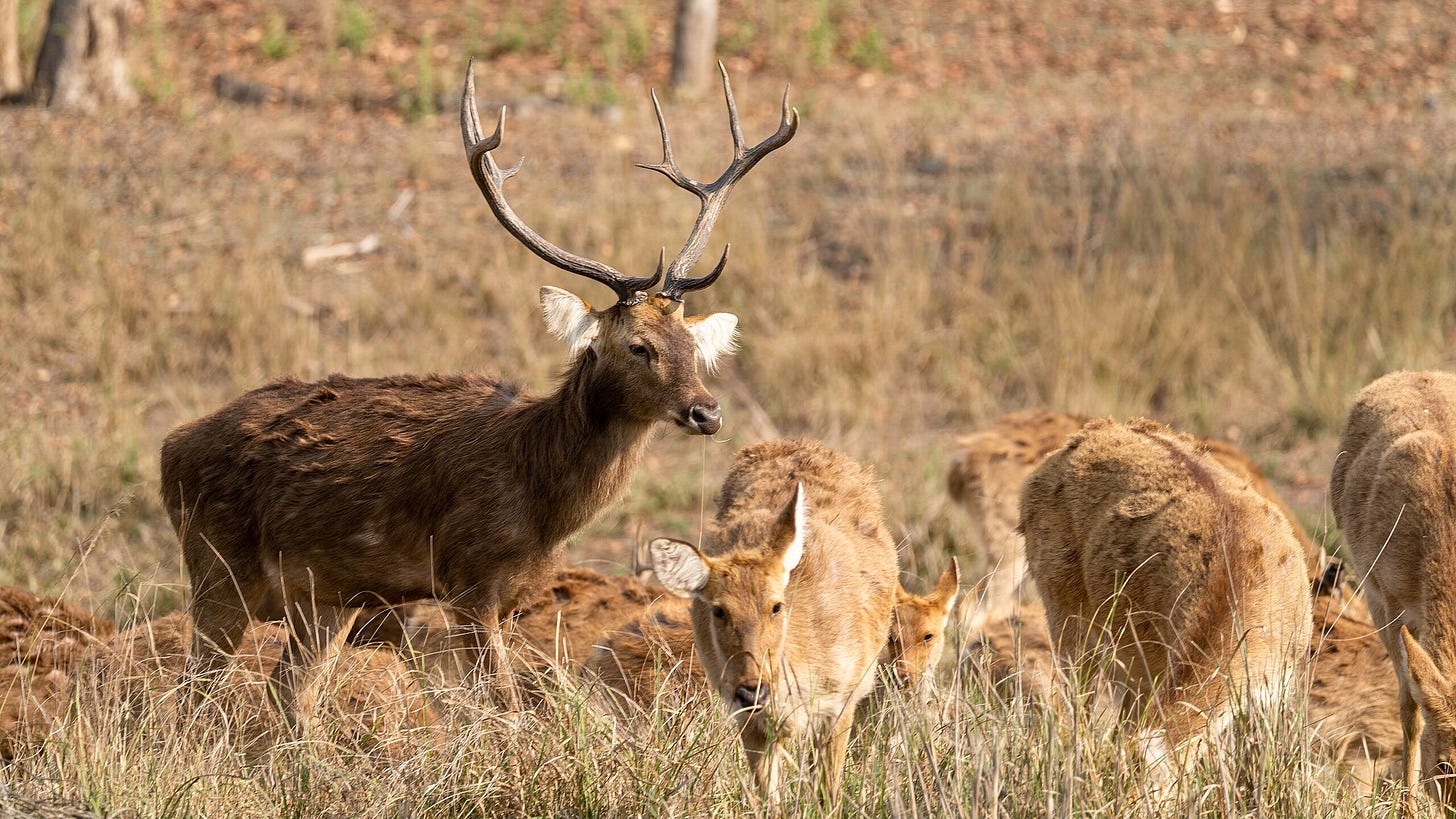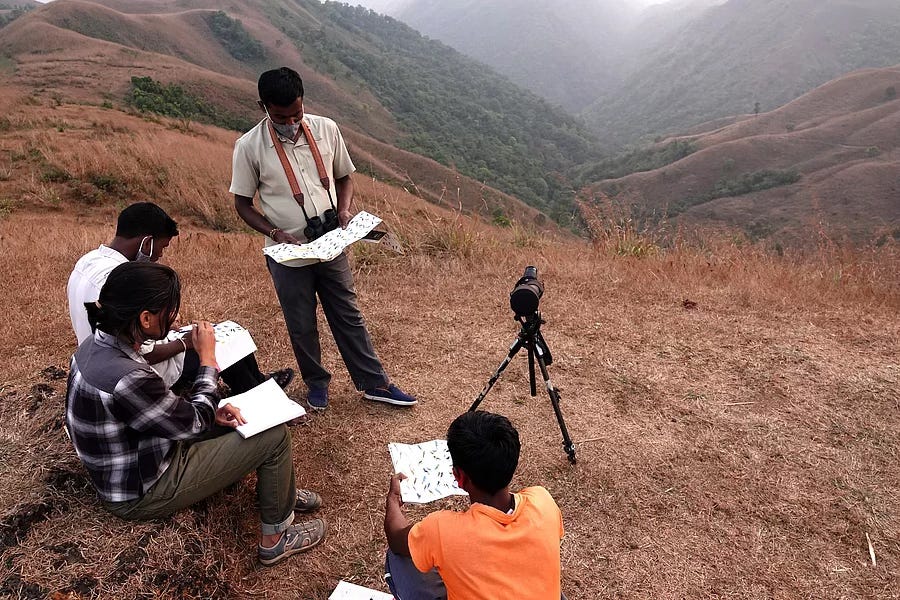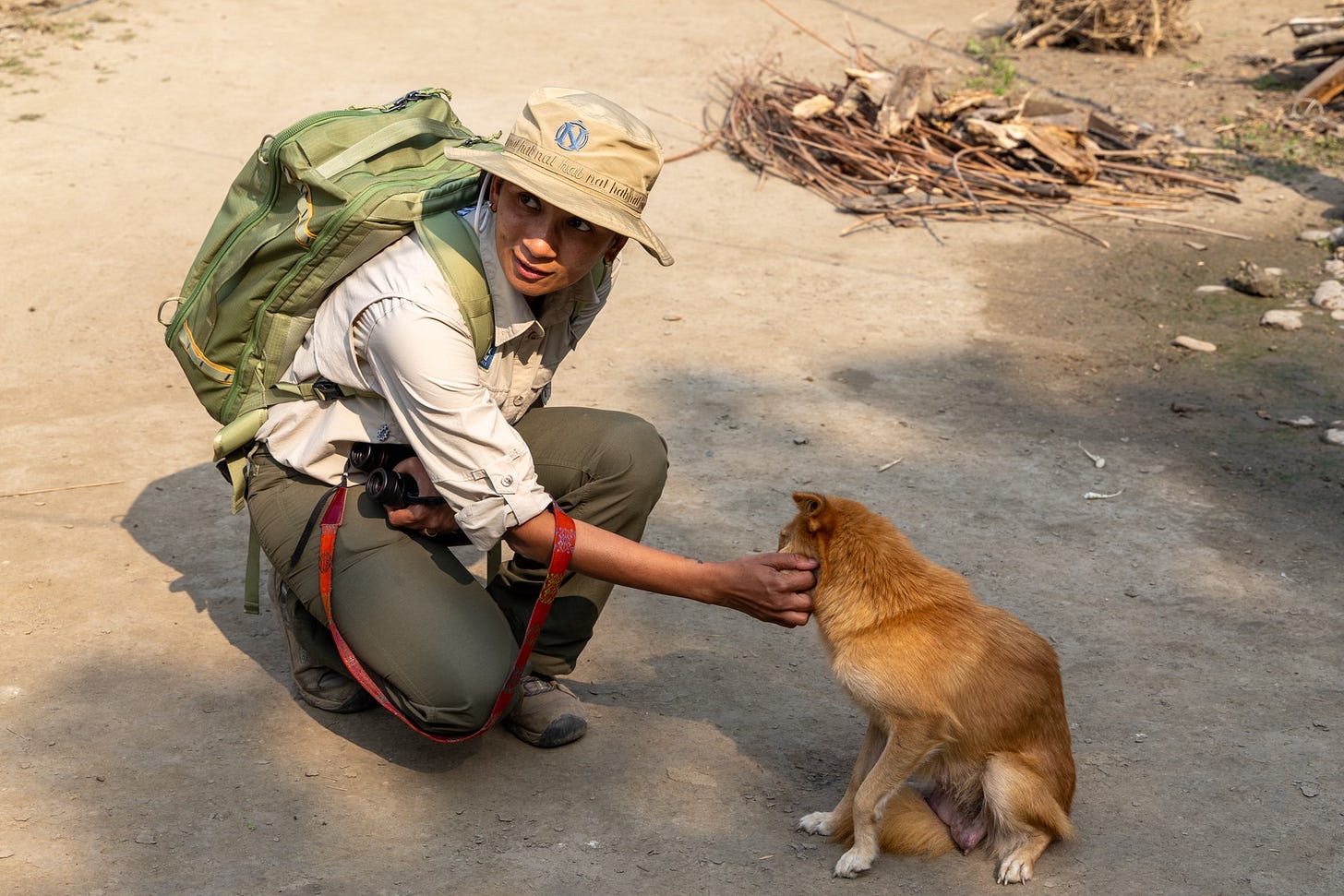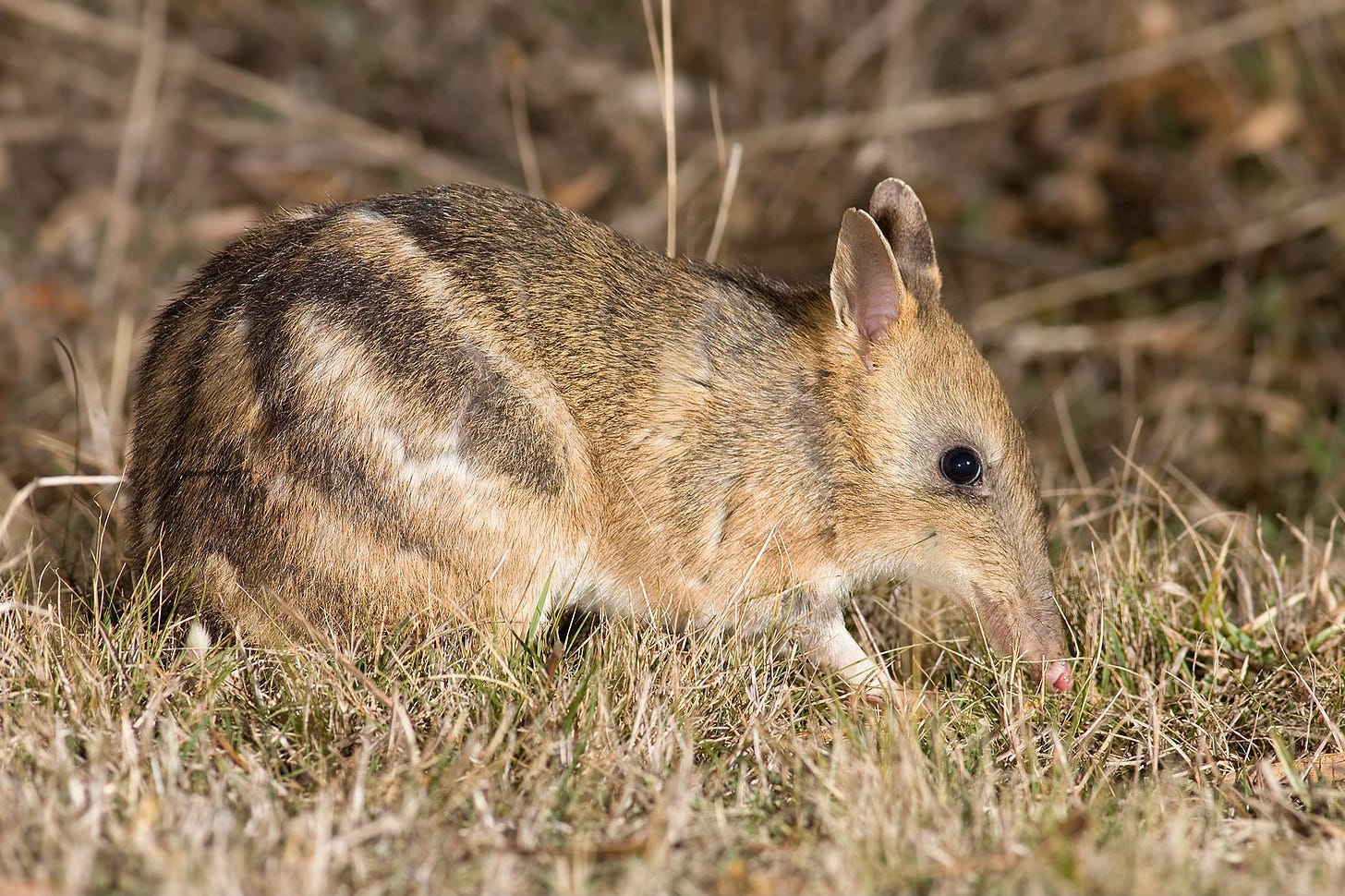The academy turning local knowledge into dream wilderness careers
Plus, we find some new mammals that are literally glowing.
By Dan Fletcher
I first met Payal Mehta when she was guiding me through Bhutan and Nepal's national parks last year. Her encyclopedic knowledge of local ecosystems and infectious enthusiasm for even the smallest bugs (and most common birds) made those experiences unforgettable. What I didn't fully appreciate then was how she's working to multiply that impact across India through Nature Guides Academy, an organization she cofounded to train the next generation of wilderness guides.
"I grew up in the city of Mumbai. It's a concrete jungle, if anything," Mehta told me during a recent conversation. "I did not even know of the existence of a career like this. But I was always interested in the outdoors."
Her journey into guiding began almost by accident. After joining the Bombay Natural History Society, one of India's oldest nature organizations, she learned about a unique opportunity: South African rangers were coming to India to teach a first-of-its-kind course on becoming a naturalist guide.
"I signed up immediately," she recalls. "Not because I loved wildlife or knew what the job entailed. But just out of curiosity — I really had to find out what this is all about."
Even though she already had a masters in geology, that decision changed her life trajectory. "That first month just changed my whole life," Mehta says. "It just sort of decided what I would do for the rest of my life, or at least for a large chunk of it."
After working as a lodge naturalist in Kanha National Park for three years, Mehta ventured into freelance guiding, which allowed her to explore India's varied biodiversity beyond a single park. From desert ecosystems to mountain ranges to coastal regions, she expanded her knowledge while refining her ability to interpret these environments for visitors.
But she soon discovered an opportunity to make an even bigger impact. When other lodges and organizations saw the value trained guides brought to wildlife tourism, they began asking if she could train their staff.
"A couple of different organizations got in touch and said, you know, we heard you went through training. Can you do something similar?" she explains. These informal training sessions evolved organically over a decade, gradually covering diverse regions across India.
"From the far west to the far east, down south, central India... every year there'd be like a new set of people," Mehta says. "Sometimes they are city-bred people who've come like me, who know their textbook knowledge but don't really know the field. Or sometimes you find yourself with a group of tribal folks who really know their forest but don't really know how to communicate that information to guests."
Last year, Mehta and her partners (including her husband and fellow guide, Harsha Jayaramaiah) decided to formalize this work by founding Nature Guides Academy. Rather than operating as a non-profit, which has become increasingly difficult in India's current political climate, they structured it as a social enterprise that still prioritizes their core mission.
Their flagship program is a comprehensive 35-day residential course that costs 175,000 rupees (approximately $2,100) per participant. This covers everything from lodging and meals to field trips and specialized instruction from expert naturalists.
But Mehta and her team recognized that this cost would be prohibitive for many of the people who would benefit most from the training — particularly those from rural and tribal communities with deep knowledge of local ecosystems but limited financial resources.
Their solution was to approach travel companies that rely on skilled guides. "They have the most to gain when there are good guides on the ground. They go back with happy clients," Mehta explains. The response was enthusiastic. In their first course, 14 out of 18 participants received some form of scholarship. For their upcoming course, a dozen or more participants will have scholarship support ranging from partial to complete funding.
The academy's strict selection criteria ensures these opportunities go to those who will use them. "Every single person joining the course wants to pursue this as a profession," Mehta emphasizes. "We are not taking participants who are doing it for a hobby or for self-improvement."
Beyond just wildlife knowledge, the academy teaches the full spectrum of guiding skills: how to communicate effectively, manage group dynamics, and create memorable experiences. "It's not just about nature," Mehta says. "It's also about people. You're a host. And sometimes a babysitter. And sometimes a bartender. All of those skills come in."
The academy helps graduates with job placement, creating a pipeline from training to employment. Many of their earliest trainees are still working as guides years later, proof of the program's effectiveness and the viability of guiding as a career path.
Nature Guides Academy is planning to expand their impact in the coming year, with a particular focus on addressing gender disparities in the field. "What we are struggling with right now, and want to address next year, is to have more girls join," Mehta says, noting the cultural and logistical barriers that often prevent women in rural India from pursuing careers as guides.
For the academy's founders, the impact of their work extends far beyond creating jobs. They see guides as frontline conservation educators, forging emotional connections between visitors and wild places that can lead to lasting protection.
"The more I'm in this I feel just education and awareness, which is a part of conservation, is handled in such a big way by guides who are just scattered around the planet and doing this every single day," Mehta reflects. "It's literally the biggest win-win-win sort of career path which really is good for everybody."
In a world where pristine natural spaces are increasingly threatened by development and extraction, creating champions for these places may be their best hope for survival. By creating both livelihoods and love for the natural world, Nature Guides Academy is building a network of ambassadors for India's wild places — one guide at a time.
Quick links! 🔗
Colorado's most unusual reality show (and my personal nightmare) just returned: Project RattleCam is back, offering a rare livestream inside the state's "mega den" where hundreds of prairie rattlesnakes are emerging from their winter slumber. The project, funded entirely by donations, tracks about two dozen named snakes, each with their own personality. There’s Lasagna, who folds herself like a pan of noodles, and Stubby, who's missing a tail but remains brave and resilient. Twitchy, the self-proclaimed "ladies man," apparently loves putting on a show whenever female snakes are around. There's even a live chat where viewers can discuss snake behavior and the surprisingly dramatic social dynamics of this underground community.
Scientists discovered an unexpected luminous world hiding in Australia's mammal fur. Researchers at James Cook University found that creatures like bandicoots, possums, and tree-kangaroos actually glow under ultraviolet light, revealing a secret biochemical landscape that could potentially serve as communication signals, warning mechanisms, or even metabolic waste disposal systems. The study, published in PLOS One, uncovered molecules that emit pink, yellow, blue, and white colors when exposed to UV light, with over 57 fur compounds still waiting to be identified — suggesting that nature's hidden brilliance is just beginning to be understood.








